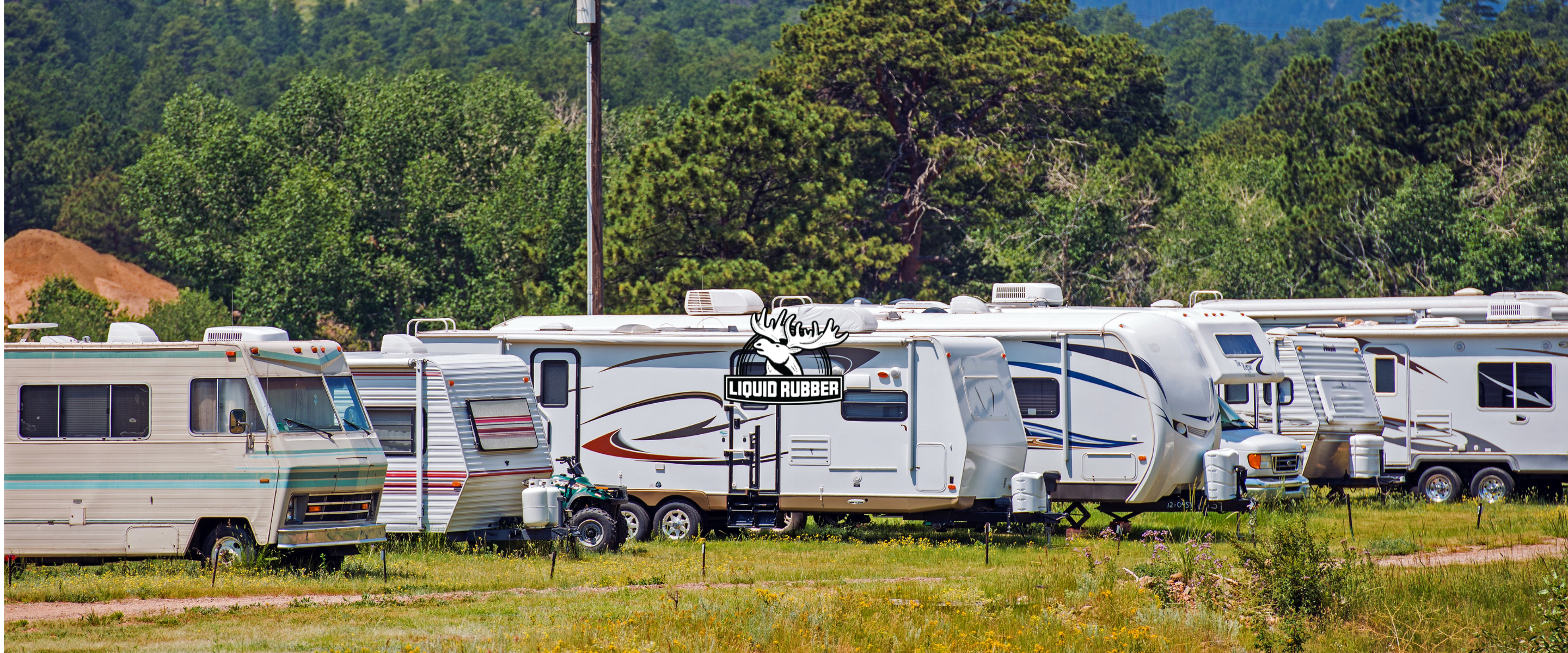Your driveway is a staple to your home. It adds curbside appeal and aesthetic value that shouldn’t be understated. As a matter of fact, it’s also one of the most expensive parts of your home to redo. That’s why good driveway maintenance makes a whole lot of sense.
For most homeowners, the DIY elbow grease that you have to put in combined with the low cost of rubber driveway sealers make it possible to seal an aging, cracking driveway a few times before having to consider the cost and inconvenience of replacing it.
If you’ve asked yourself before: Can my driveway be resurfaced with rubber (instead of replacing the whole thing), you’re in luck. The answer is YES, and here’s how you can do it yourself!
What is Asphalt Driveway Sealant?
Let’s first start by answering the pressing question at hand: what is asphalt driveway sealant?
Rubber driveway sealer like, Liquid Rubber Driveway Restore, is a water-based, nontoxic compound that can be applied at the beginner level over the course of 48 hours. It’s safe for the environment and doesn’t emit VOCs, which means it’s also safe for your family and your pets, too. It’s designed to fill and seal small existing cracks while creating a new layer of protective, rubberized coating on the asphalt's surface, adding years of use to your driveway while improving the look of it.
This special type of rubber driveway sealer comes in large buckets. After you have the necessary tools to apply it, and you have made all of the preparations, it can be applied in multiple coats using a foam squeegee or a roller. Curing time is about 48 hours, after which, your driveway will look like it’s brand new and will be conditioned to withstand the weather and the sun’s UV rays for years to come.
Why Should You Seal Your Driveway?
The first reason you should take into consideration is the cost of replacing an aging driveway as opposed to simply resealing it. Costs to replace a driveway can range from $10 to $18 per square foot or more. That’s not factoring in the cost to remove the existing driveway that you have, which ups the price tag even further.
Instead, you can use cost effective rubber driveway coating which can add years of use on to your driveway while filling in and sealing any cracks, preventing further decay and helping you avoid the high cost of a complete replacement.
If you've noticed any cracks in your driveway, it’s because the weather, including moisture, hot and cold compression and depression cause the asphalt to contract and expand. Over time, this can create cracks, which then are penetrated by moisture. As more time passes, water can begin to erode the driveway, causing the cracks to get wider and expand, which in turn creates even more cracks.
The good news is that asphalt driveway sealant helps prevent existing cracks from widening by filling them with a waterproof compound, while at the same time also coating the entire surface. What’s more, it refreshes the look and feel of your driveway, adding a robust, blackened texture that covers up any existing imperfections, essentially renewing your driveway for years to come at a fraction of the cost of replacement.
How Do You Apply Liquid Rubber Driveway Restore?
Before you get started, make sure you download our helpful Driveway Restore Supply Checklist.
- You’re going to want to start a driveway resealing project during the warmer spring months.
- If you have any potholes in the driveway, these will need to be patched beforehand using cold asphalt (does not require any heat).
- If you are not familiar with cold asphalt patching, you can hire a subcontractor to do this on your behalf for a competitive rate that’s very cost effective (especially as compared to redoing the entire driveway).
- Once you’ve patched any potholes and they’re fully cured, you can begin your driveway resealing project by starting with cleaning the driveway fully.
- First, use a pressure washer to really remove all dirt, debris, oils, staining and other elements.
- Next, you’re going to want to do a second round of cleaning using a proper Liquid Rubber Deck & Patio Cleaner.
- Follow this with an additional round of power washing to ensure that your driveway is optimal for resealing and bonding. Allow at least 24 hours to pass after cleaning your driveway for the surface to dry before applying the sealer.
- If you have large cracks in your driveway, you’ll want to fill them using something called driveway caulking. These come in large caulking canisters and can be easily applied to fill any cracks. Remove any excess caulking after application for a smooth exterior finish.
- Preparing your driveway for the sealant requires that you have the right tools. These include: foam squeegee or roller, bucket placement of the sealant, the right amount of product, rags, old clothing and gloves.
- Slowly pour out the sealant and spread it using even strokes across your driveway, ensuring that each stroke has an adequate amount of product to give a thick outer coating. After allowing the first coating to dry for at least 4 hours, you can reapply to add a second coating and additional protection.
- Allow the sealant to cure at least 48 hours before parking or walking on the driveway.
 Need Even More Tips on DIY Home Improvement?
Need Even More Tips on DIY Home Improvement?
We’re here to help you by providing tips for all of your home improvement DIY project needs. Take a look at a few related guides we’ve published to see what other projects we can help you get done faster.





